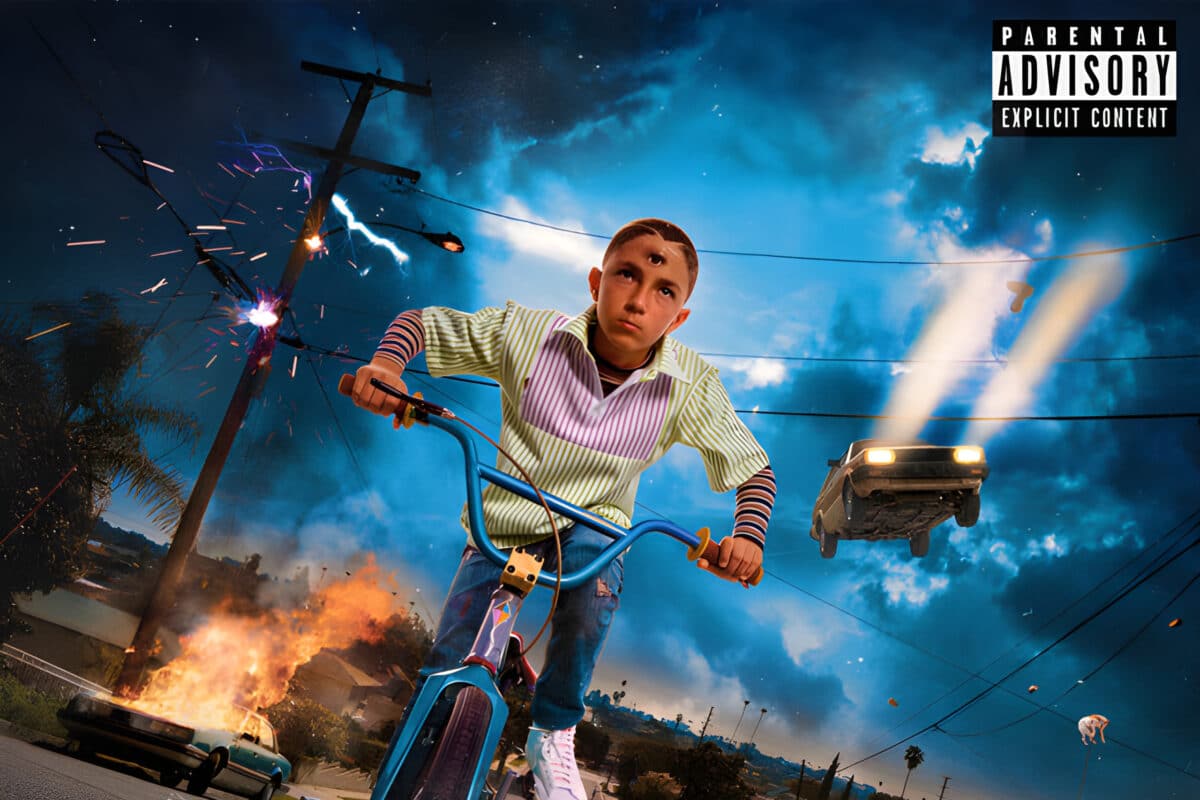Released: 2020
“Safaera” by Bad Bunny featuring Jowell & Randy, Ñengo Flow is a wild ride through the reggaeton scene, packed with raw energy and explicit lyrics. This track is all about party vibes, unfiltered attraction, and an unapologetic celebration of hedonism. It’s a high-octane homage to perreo and the freedom of the dance floor.
Starting off with a barrage of “bla,” “yo,” and “la,” the song establishes its playful yet chaotic tone. “Diablo’, qué safaera” is like exclaiming, “Damn, that’s wild,” setting up the main theme of the song, which revolves around raw, unfiltered party life and sexual freedom.
When the lyrics mention, “Tú tiene’ un culo cabrón,” it’s basically praising someone’s attractive body, especially their backside. Bad Bunny emphasizes that no matter what she wears, she makes heads turn on the streets. The repetition of “Muévelo” (move it) shows it’s all about dancing and owning that moment on the dance floor.
As the lyrics progress, the lines “Qué falta de respeto, mami / ¿Cómo te atreve’ a venir sin panti?” touch on shock and admiration for someone’s daring nature. It’s both a critique and a celebration of boldness. The following lines, “Hoy saliste puesta pa mí / Yo que pensaba que venía a dormir,” signify that she’s ready for a wild night, not just a casual hangout.
Bad Bunny then shifts to a personal declaration: “Yo hago lo que me da la gana,” asserting his freedom and autonomy. “Si Dio’ lo permite” translates to “If God allows it,” but in the context, it’s about giving in to temptations and indulgences without guilt, as if seeking a higher approval for having fun.
Ñengo Flow’s verse continues the explicit narrative with “Chocha con bicho” (vagina with dick), explicitly describing sexual encounters. References like “teta’ bien grande’ como Lourdes Chacón” and “Iris Chacón” are iconic nods to famous Puerto Rican entertainers known for their hourglass figures, reinforcing the cultural love for voluptuous physiques.
The hook brings it back to partying with “Hoy se bebe, hoy se gasta,” (Today we drink, today we spend) repeating the theme of living in the moment. “Hoy se fuma como un rasta” illustrates smoking weed freely, adding to the carefree, rebellious vibe.
When Bad Bunny says, “Aquí llegó tu tiburón / Yo quiero perrearte y fumarme un blunt,” he’s declaring his dominant presence (like a shark) and desire to dance close and smoke. Perreo, a form of reggaeton dance, is all about grinding and physically expressing rhythm.
The song peaks with raw, edgy lines like “Mi bicho anda fugao y yo quiero que tú me lo esconda,” indicating his arousal and desire for intimacy. The line “Se metió una pepa que la pone cachonda” talks about taking a pill that turns her on, nodding to the recreational drug use often depicted in party scenes.
Jowell caps it off by emphasizing the explicit nature of the lifestyle he’s celebrating. “Se ve que chinga rico” means “it looks like she f***s good,” keeping the focus on raw attraction and unabashed indulgence.
In essence, “Safaera” is a full-throttle ode to freedom, attraction, and the hedonistic aspects of nightlife, wrapped in reggaeton beats and unfiltered language. It mirrors a cultural space where inhibitions dissolve and raw energy is celebrated.








